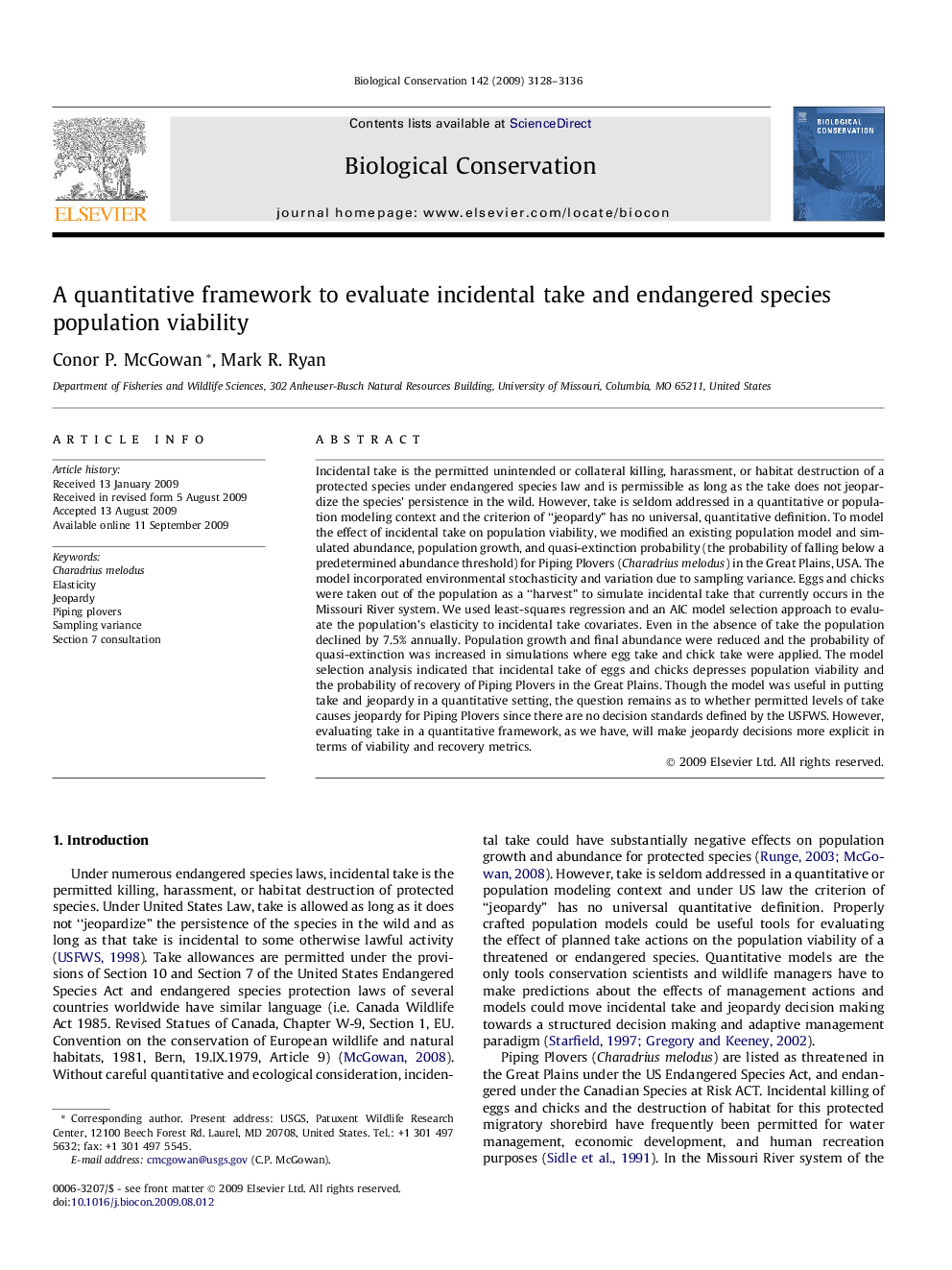| کد مقاله | کد نشریه | سال انتشار | مقاله انگلیسی | نسخه تمام متن |
|---|---|---|---|---|
| 4386411 | 1304565 | 2009 | 9 صفحه PDF | دانلود رایگان |

Incidental take is the permitted unintended or collateral killing, harassment, or habitat destruction of a protected species under endangered species law and is permissible as long as the take does not jeopardize the species’ persistence in the wild. However, take is seldom addressed in a quantitative or population modeling context and the criterion of “jeopardy” has no universal, quantitative definition. To model the effect of incidental take on population viability, we modified an existing population model and simulated abundance, population growth, and quasi-extinction probability (the probability of falling below a predetermined abundance threshold) for Piping Plovers (Charadrius melodus) in the Great Plains, USA. The model incorporated environmental stochasticity and variation due to sampling variance. Eggs and chicks were taken out of the population as a “harvest” to simulate incidental take that currently occurs in the Missouri River system. We used least-squares regression and an AIC model selection approach to evaluate the population’s elasticity to incidental take covariates. Even in the absence of take the population declined by 7.5% annually. Population growth and final abundance were reduced and the probability of quasi-extinction was increased in simulations where egg take and chick take were applied. The model selection analysis indicated that incidental take of eggs and chicks depresses population viability and the probability of recovery of Piping Plovers in the Great Plains. Though the model was useful in putting take and jeopardy in a quantitative setting, the question remains as to whether permitted levels of take causes jeopardy for Piping Plovers since there are no decision standards defined by the USFWS. However, evaluating take in a quantitative framework, as we have, will make jeopardy decisions more explicit in terms of viability and recovery metrics.
Journal: Biological Conservation - Volume 142, Issue 12, December 2009, Pages 3128–3136